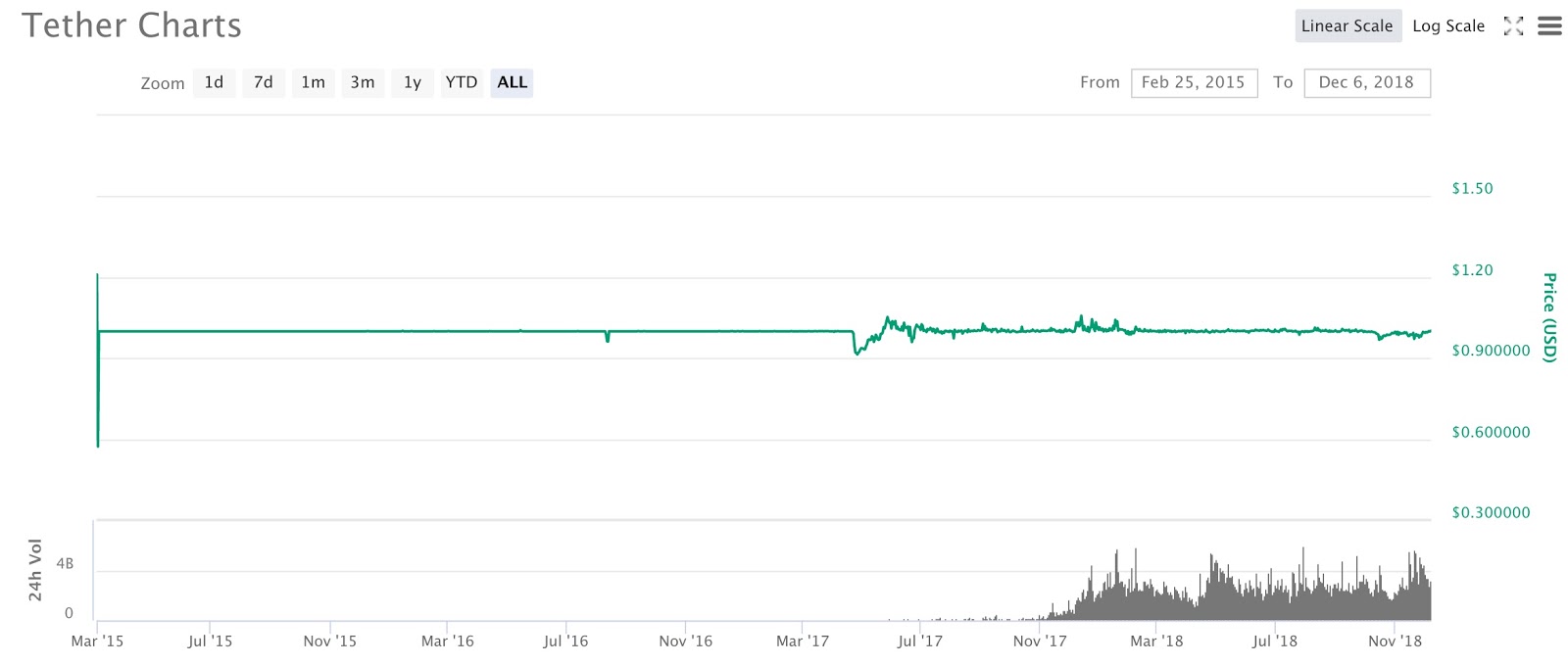A single Bitcoin was worth around $20,000 in January this year, and today the price stands at $3,750 – an example of severe price fluctuation, which while common in the crypto space, is still an enormous hurdle in the way of mass adoption and daily transactional usage of digital currencies.
This volatility is what is largely preventing cryptocurrencies from becoming monetary substitutes for regular use, be it cross-border money transfers, salary payouts or paying for a coffee at Starbucks. Unfortunately, these price movements have been overshadowing the several technological benefits inherent in cryptocurrencies, but with stablecoins, we are beginning to see things change.
What are stablecoins?
As the name suggests, stablecoins are cryptocurrencies which are largely stable in their price, as opposed to regular coins (BTC, ETH, LTC etc.). One of the most prominent examples of stablecoins is Tether (USDT), which has been a regular listing on most exchanges and is used as a hedge against Bitcoin and crypto volatility.
Typically, a stablecoin has a set value, and deviates minimally from it – in the case of USDT, each Tether is worth one United States Dollar, and over the years, it has never dropped below $0.90 (see chart below).

How do stablecoins work?
To put it simply, the stability of a stablecoin depends on what it is pegged to, or how it is collateralized. For instance, the Tether is stable in price because each USDT in circulation is backed by an actual dollar, and Tethers are, in theory (though not as straightforward in reality) redeemable for actual dollars, held by the company managing the issuance and distribution.
There are a few different collateralization models with their own pros and cons.
The price of stability
Stablecoins need collateral for stability. As discussed above, Tether is an example of a fiat-collateralized stablecoin, and others include TrueUSD, the Gemini Dollar and the Circle USDC.
While fiat-backed stablecoins are among the most reliable, they come with several compromises. The biggest concern with these is that of centralization – the issuing company holds all the fiat which backs the coins, and hence, it ultimately controls the actual asset as opposed to Bitcoin, or other cryptocurrencies, which have an inherent value (though unstable) and are decentralized, giving the holder full control.
An alternative model for stablecoins is crypto-collateralization – which although more complicated, favors crypto over fiat. Crypto-collateralization is tricky because cryptocurrencies are volatile, and to collateralize a coin with crypto, we need to ‘over-collateralize’.
One such example is Havven, which uses a dual token set up, whereby holders of the underlying token (Havvens) are able to issue transactional coins (Nomins) worth 20% of their holdings. In this case, the Nomins are essentially collateralized by the 80% excess Havvens, and the stability providers are incentivized by transaction fees and such.
Finally, we are witnessing an increasing interest in algorithmically managed stablecoins, which are, arguably the most promising, but unproven as yet. These stablecoins are not collateralized but derive their stability via algorithms constantly varying their supply to match demand and maintain the desired price level.
Examples of algorithmic stablecoins include Basis, Carbon, and Terra. Theoretically, algorithmic stablecoins are ideal in that they do not require reserve backing or collateralization, and are hence much more scalable. However, they are yet to be tested in the market.
Are stablecoins the future?
While stablecoins are definitely poised to be a big part of the blockchain economy, they are not going to replace existing cryptocurrencies such as Bitcoin and Ethereum. Their main utility lies in their stability, which makes them ideal for transactional usage while retaining the benefits of crypto, such as instantaneous transfers, complete ownership, better privacy, and global accessibility.
At BitBull Capital, we pride ourselves in providing leading crypto asset investment research. Subscribe to our Crypto Investing research here.

